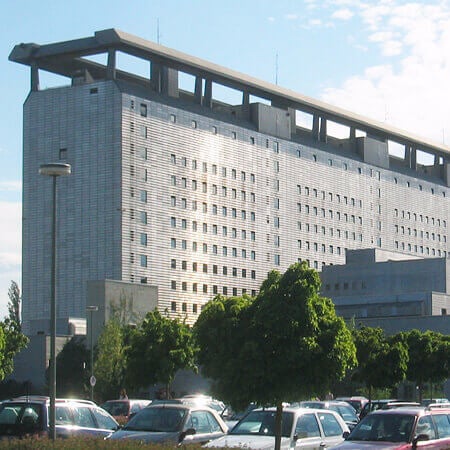About the disease
Hyperparathyroidism is a condition that causes an excessive amount of parathyroid hormone to be produced. The parathyroid glands that produce this hormone are located in the neck and are responsible for regulating the amount of calcium in the blood and tissue. Calcium is a mineral that the body requires in order to maintain healthy bones, help blood clotting and transmit nerve impulses, including those that ensure a regular heartbeat.
There are two types of hyperthyroidism: primary and secondary:
In primary hyperparathyroidism, a parathyroid gland becomes enlarged and produces too much parathyroid hormone. Although it can also be caused by adenomas and tumors, 90% of all cases of primary hyperparathyroidism are caused by parathyroid gland enlargement.
In secondary hyperparathyroidism, the abnormal production of parathyroid hormone is caused by other health conditions. In this case, the sufferer experiences symptoms opposite to primary hyperparathyroidism: the level of calcium in the bloodstream is too low, which can cause pain in the joints, decreased hair growth and thinning of the bones. The risk of fracturing bones is much higher and, if the condition is not treated in time, it may cause osteoporosis. Over time, secondary hyperparathyroidism can transform into primary hyperparathyroidism, whereby a parathyroid gland goes from producing an insufficient amount of calcium to producing too much of it.
Symptoms
- Fragile bones
- Joint pain
- Hair loss
- Frequent urination
- Fatigue
- Irritability
- Nausea
Diagnosis
- A blood test can determine if there is an increased amount of calcium in the blood. Patients with adenomas and tumors also need to undergo a blood test to find out whether the parathyroid glands have been affected.
- A urine test detects the exact amount of calcium in the urine and can also determine whether the kidneys are working properly.
- Ultrasound of the kidneys is ordered in progressed stages of hyperparathyroidism if there is a suspicion of any abnormalities.
Treatment
- In 95% of cases, hyperparathyroidism requires the surgical removal of the affected parathyroid glands. If the patient also has an adenoma or tumor, the surgeon will remove these as well to avoid future complications on the remaining parathyroid glands.
- Hormone replacement treatment is usually required following surgery. This aims to normalize calcium and hormone levels in the body and helps the patient to restore normal hair and bone growth.
Authors:
This article was edited by medical experts, board-certified doctors Dr. Nadezhda Ivanisova, and Dr. Bohdan Mykhalniuk. For the treatment of the conditions referred to in the article, you must consult a doctor; the information in the article is not intended for self-medication!
Our editorial policy, which details our commitment to accuracy and transparency, is available here. Click this link to review our policies.
















